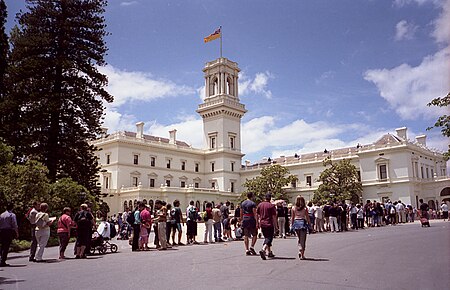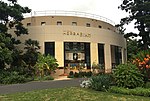Government House, Melbourne

Government House is the official residence of the governor of Victoria, currently Linda Dessau. It is located in Kings Domain, Melbourne, next to the Royal Botanic Gardens. Government House was opened in 1876, on land that had originally been set aside in 1841. Previous governors' residences included La Trobe's Cottage (1839–1854), Toorak House (1854–1874), and Bishopscourt (1874–1876). It was designed by William Wardell in the Italianate style, and modelled to some extent on Queen Victoria's Osborne House residence, to which it bears a strong resemblance. Between 1901 and 1930, Government House was used as the official residence of the Governor-General of Australia. This occurred during the period when Canberra was still under construction and Melbourne was designated as the temporary seat of government. Despite Parliament House opening in 1927, the Governor-General did not permanently move to Yarralumla for another three years, at which point Government House was given back to the Victorian government.
Excerpt from the Wikipedia article Government House, Melbourne (License: CC BY-SA 3.0, Authors, Images).Government House, Melbourne
Government House Drive, Melbourne Melbourne
Geographical coordinates (GPS) Address External links Nearby Places Show on map
Geographical coordinates (GPS)
| Latitude | Longitude |
|---|---|
| N -37.827939 ° | E 144.976939 ° |
Address
Government House
Government House Drive
3004 Melbourne, Melbourne
Victoria, Australia
Open on Google Maps









